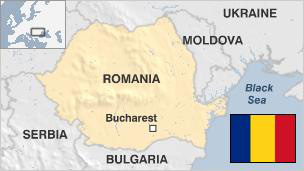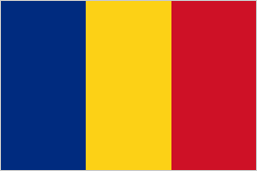Overview
This is one of the largest of the Balkan, South-Eastern European countries, and 12th -largest country in Europe, with an area of 238,397 km². Romania has a coastline bordering on the Black Sea, and has the striking mountainous and forested region of Transylvania, bordered by the Carpathian Mountains. Romania has a temperate-continental climate, with hot summers, long, cold winters and 4 very distinctive seasons. Romania is uniquely located at the junction of Central, Eastern, and Southeastern Europe.
The country underwent a major transition from communism in 1989, to a democracy and a market economy; joining Nato during 2004 and eventually becoming a member of the European Union (EU) in 2007. Romania’s inhabitants number almost 20 Million people and use Romanian as the official language (an old Latin-based language). Significant minority groups include Hungarians and Germans, especially in the region of Transylvania.
Socio-Economic Profile
Romania is a fast developing, upper middle income mixed economy with a very high Human Development Index and a skilled labour force, and in the EU ranked 15th by total nominal GDP and 10th largest by purchasing power parity.
Since joining the European Union (EU), Romania has implementing structural economic changes, and has made progress in been catching-up with the rest of the EU in terms of GDP per capita and productivity. The country’s structural transformation has given rise to a region-wide distribution of opportunities. Economic growth recovered during 2013-17, mainly due to exemplary monetary policies during 2016-2017 that made a major contribution towards the annual fiscal deficit. In addition to this the economic growth was spurred on by robust industrial exports and excellent agricultural harvests.

Romania countryside
Economic growth outperformed many of its European counterparts, during the last 2 years; showing encouraging signs that the country was moving towards finally harnessing the true potential of its population, the 2nd largest in central Europe behind Poland.
Romania has also experienced its fair share of excellent FDI inflows with a Net investment increase of 17.9% for 2019, reaching US$24 billion or 22 billion Euros.
Net investment in machinery and equipment, including vehicles, rose by 9.3% year-on-year in 2019 while net investment in new construction jumped by 32.5%.
The tech sector which employs about 150,000 people, is predicted to double its GDP contribution to 12% by 2025, facilitated by one of the fastest broadband internet speeds in Europe.
The European Commission (EC) has increased its growth estimates for Romania’s economy to 3.8% in 2020 and 3.5% in 2021, while some Economists have a conservative forecasted growth of 3.1% in 2020, and 2.8% for 2021.
Romania is blessed with many valuable natural resources such its own oil and gas reserves; producing coal, natural gas, iron ore and petroleum. However most raw materials for the country’s large industrial industry are imported.
Major industries include: Industrial and transport equipment including auto assembly, metal processing, machine manufacturing, electric machinery and equipment, petroleum refining, mining, chemical (petrochemical, paints and varnishes), light machinery, metallurgy, textiles and footwear, manufactured consumer goods, food processing, timber and furniture, and construction materials.
Romania’s territory comprises of 39.2% cultivatable land, 28% forests, 21% pastures, meadows and orchards and 2.5% vineyards.
Agriculture continues to be an important economic sector, employing about one-third of the country’s workforce.
The main agricultural products are: Corn, wheat, barley, sunflower seeds, sugar beet, vegetable oil seeds, vegetables including potatoes, fruit such as apples and grapes for wine; while the main animal-husbandry farming is sheep, pigs and poultry such as chickens.
The Forestry and fishery industry, have long-term development programs underway.
The various economic sectors GDP contribution are estimated to be as follows: Services sector contribution at 62.6%; Industry and manufacturing at 33.2%; and Agriculture at 4.2%.

Mountain valley
Romania’s Exports commodities include: Machinery and equipment, agricultural products and foodstuffs, metals and metal products, chemicals, minerals and fuels, raw materials and other manufactured goods.
Romania’s sovereign credit ratings are as follows: Standard & Poor’s credit rating is at BBB-with negative outlook. Moody’s credit rating is at Baa3 with stable outlook, and Fitch’s credit rating is presently at BBB-.
Tourism to this southeastern European region, has experienced a steady growth; with tourists keen to visit the forested region of Transylvania, with the Carpathian Mountains, the undulating hills, and the medieval towns with its old churches and castles. Apart from this there is also the beautiful Black sea coastal region and the various cities.
During 2018, Romania’s tourism sector had a direct contribution of EUR 5.21 billion to the GDP and when compared to the previous year, arrivals increased by more than 10 %.
The number of tourists staying in Romania in 2019 grew by 3.6% on the year to more than 13.26 million, of which more than 10 million of these were foreign tourists.
Tourists spent 29.8 million overnights in Romania in 2019, which was more than 5% compared to the previous year.
Brief Socio-Economic Profile – 2019

Brasov
Population: 19.6 million
GDP (PPP): $481.5 billion
GDP Growth: 7%
GDP 5-yearcompound annual growth: 4.5%
GDP per capita: $24,508
Unemployment Rate: 4.9%
Inflation Rate (CPI): 1.3%
Foreign Direct Investment (FDI) Inflow: $5.2 billion
Romania is ranked 21st among 44 countries in the Europe region.


